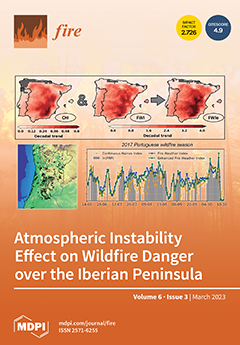Carbon capture and use may provide motivation for the global problem of mitigating global warming from substantial industrial emitters. Captured CO
2 may be transformed into a range of products such as methanol as renewable energy sources. Polymers, cement, and heterogeneous catalysts for
[...] Read more.
Carbon capture and use may provide motivation for the global problem of mitigating global warming from substantial industrial emitters. Captured CO
2 may be transformed into a range of products such as methanol as renewable energy sources. Polymers, cement, and heterogeneous catalysts for varying chemical synthesis are examples of commercial goods. Because some of these components may be converted into power, CO
2 is a feedstock and excellent energy transporter. By employing collected CO
2 from the atmosphere as the primary hydrocarbon source, a carbon-neutral fuel may be created. The fuel is subsequently burned, and CO
2 is released into the atmosphere like a byproduct of the combustion process. There is no net carbon dioxide emitted or withdrawn from the environment during this process, hence the name carbon-neutral fuel. In a world with net-zero CO
2 emissions, the anthroposphere will have attained its carbon hold-up capacity in response to a particular global average temperature increase, such as 1.5 °C. As a result, each carbon atom removed from the subsurface (lithosphere) must be returned to it, or it will be expelled into the atmosphere. CO
2 removal technologies, such as biofuels with carbon sequestration and direct air capture, will be required to lower the high CO
2 concentration in the atmosphere if the Paris Agreement’s ambitious climate targets are to be realized. In a carbon-neutral scenario, CO
2 consumption with renewable energy is expected to contribute to the displacement of fossil fuels. This article includes a conceptual study and an evaluation of fuel technology that enables a carbon-neutral chemical industry in a net-zero-CO
2-emissions environment. These are based on the use of collected CO
2 as a feedstock in novel chemical processes, along with “green” hydrogen, or on the use of biomass. It will also shed light on innovative methods of green transformation and getting sustainable, environmentally friendly energy.
Full article





